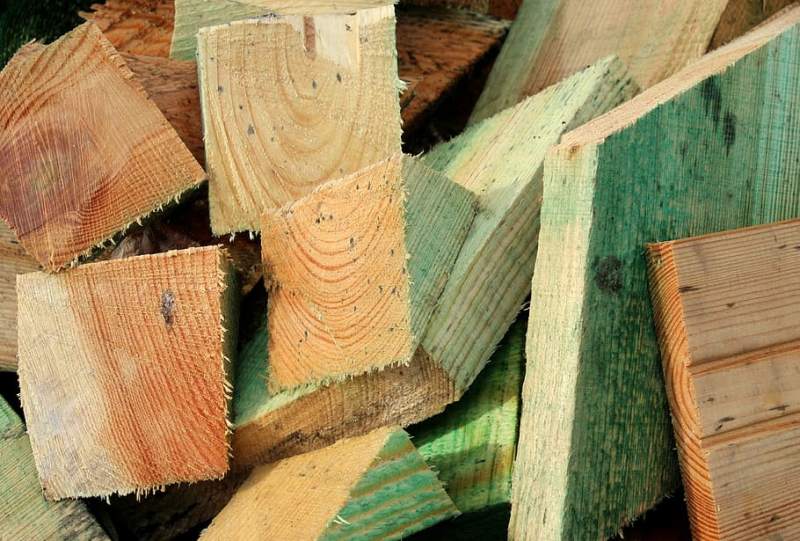Contents
– Ecological materials: their usefulness
– The characteristics of green materials
– The obstacles to the use of ecological materials
Ecological materials are construction materials whose impact on the environment and health is limited, as much for their production and transport and use. However, the numerous environmental problems linked to buildings have been known for a long time and have necessitated an awareness of the sector through ambitious reforms.
Ecological materials: their usefulness
The building industry is one of the largest energy-consuming sectors. This consumption is multi-faceted: from the energy needed to extract raw materials, transform and package them to the energy used for on-site implementation, including transport and recycling at the end of life. The will to be in a reduction of the consumption of resources and fossil energies thus obliges to think according to two ways:
– We can use traditional materials that require less energy consumption in the different forms mentioned. This implies working on production processes and logistics.
– We can also use more “natural” materials, i.e., materials that exist in their natural state. When these materials are derived from plant or animal biomass, they are called bio-sourced materials.
Thus, ecological materials are less polluting not only during their manufacture but also once installed. It is essential to keep in mind that many building products continue to emit chemical compounds once installed, polluting the indoor air.
The reduction of the types of pollution is to be taken in a broad sense, with, for example, materials that require less noisy tools to install them (fight against noise pollution) or that are better sound insulators.
The characteristics of ecological materials
The ecological materials must present a certain number of characteristics.
Renewable
For example, they must be easily renewable, i.e., they must not come from a limited source depleted with use. They must consume as little energy as possible for transportation, favoring short circuits (local materials used locally). Finally, the manufacturing processes must be as energy and raw-material-efficient as possible.
Recyclable
They must be recyclable so that they can be reused at least once as is, or even several times, reconditioned to obtain the same new material, at the end of the product’s life cycle and introduced into another process, still at the end of its life, to contribute to the manufacture of a different new product. Residues from the production of green materials should be used to provide low-cost, low-emission energy or be part of the production process for other green materials.
Non-polluting
Ecological materials must preserve the health of the operators who manufacture them and those who use them or of the final customer (for example, fewer pollutants in the indoor air).
Close to conventional materials
The dimensions and quantities of materials to be used should not be too far from the same characteristics of conventional materials so that construction workers can easily install them. Also, their performance according to the sector concerned must be compatible with the requirements of the regulation.
Note: The energy contained in the building materials must be taken into account and also be related to the expected life of the building. And that whatever the body of work, for example in insulation.
Use of ecological materials

The list is long because ecological materials exist in all sectors; we can only mention a few:
– For the shell, wood (provided it comes from sustainably managed forests with FSC label) and raw earth bricks for walls, green roofs for roofing.
– For insulation, vegetable wools (based on hemp, for example), animal wools, wool or wood fiber panels (same remark as for the shell), and cork correspond to many of the criteria stated.
– For coatings, you can choose organic paints and natural fabric textiles.
Important: Many building products called “natural” or “ecological” are not because there is no global standard certifying all ecological materials and guaranteeing this characteristic to the consumer. Be careful because some manufacturers do not hesitate to “self-label” their products with an extensive communication campaign without their proven ecological character.
The brakes on the use of ecological materials
Among the brakes, the price. Indeed, ecological materials generate an additional cost of 10 to 30% for the same surfaces; this argument tends not to be a priority anymore, on the one hand, because these materials often allow having a lower energy consumption during the dwelling, on the other hand, because their more and more frequent use brings the prices down.
It is also necessary that the raw material is present in sufficient quantity, which is not always the case. In particular, there are conflicts of use; some materials are already used by other industrial transformation sectors (in the food industry, for example).
The argument of the use of local materials or even of the manufacture of materials on the building site (house in raw earth bricks or straw) is difficult to support within the framework of important construction programs which require a massive production of materials, corresponding to precise specifications, thus industrialization of the process which can be carried out only in some factories.
It is not always easy for them to comply with existing (non-ecological) technical standards, mainly when they are derived from natural substances. In this case, their conditioning, drying rate, or other characteristics may vary depending on the region of origin.
Ecological materials can sometimes require a specific technicality for their installation (straw house, for example), which not all construction workers have.
But an unstoppable argument.
In front of all these opposing arguments, we must put a positive one, which could erase them all: using materials coming from a reasonably managed biomass, i.e., producing more than the consumption we want to make of it, is the only way to build sustainably and to guarantee an efficient mix between:
– performance of the building;
– preservation of natural resources
– non-relocatable jobs;
– the fight against environmental pollution and the health safety of manufacturing personnel and building professionals.
Read more:
Towards Sustainability | Building Your Home With Natural Materials
